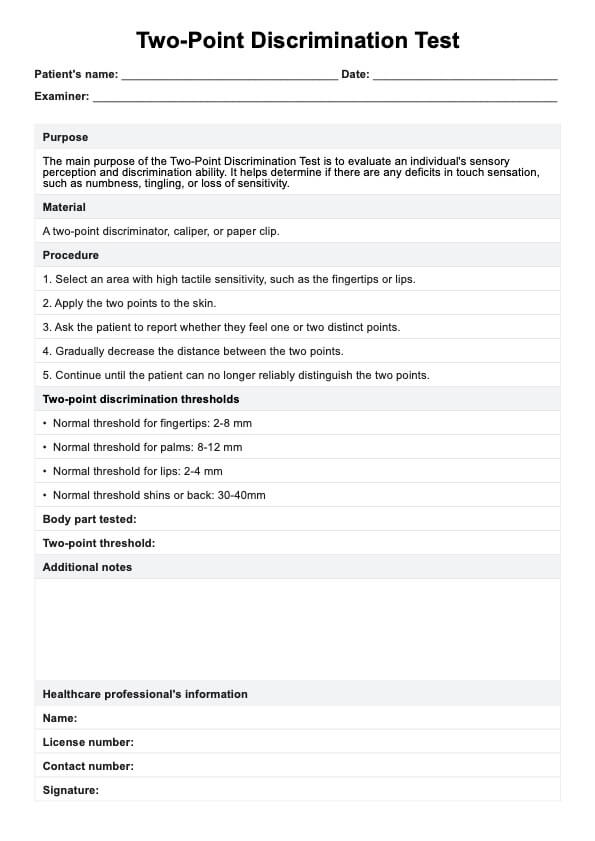The ideal outcome is the ability to distinguish two points separated by minimal distances, indicating good tactile acuity.

Two-Point Discrimination Test
Explore the fundamentals of tactile perception with our comprehensive guide on the wo-Point Discrimination Test. Download our free PDF template to enhance your clinical assessments.
Use Template
Two-Point Discrimination Test Template
Commonly asked questions
It can be adapted for different age groups and conditions, although interpretations might vary based on specific health factors.
Yes, tests like the Grating Orientation Task (GOT) provide similar insights but might be more suitable for research settings due to their complexity.
EHR and practice management software
Get started for free
*No credit card required
Free
$0/usd
Unlimited clients
Telehealth
1GB of storage
Client portal text
Automated billing and online payments











